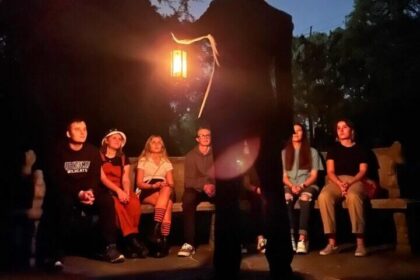Western North Carolina offers residents and visitors scenic views, peace, beautiful places, and ghost stories. One town near Asheville has a legend dating back to the Civil War.
When I’m in this region, I always keep my eyes open because of the paranormal hot spots associated with it. I often find myself in rural places with no cell signal.
The town of Fletcher is a quiet stop off Interstate 26 between Hendersonville and Asheville. It is also home to the headless horseman, who is said to still run rampant in these parts of the North Carolina backcountry.
In the 1860s, the United States found itself embroiled in a major war. The Civil War pitted the North against the South, often dividing family members against one another. One story that has withstood the test of time but is not as popular as some of the others we have written about occurred at Calvary Episcopal Church.
Every citizen who could serve in the war was called to report to the church grounds with weapons. Once a group was large enough to join the war efforts, they would march into battle.
No one dared to enter the church graveyard at night, and bloodshed on the holy grounds was forbidden. Late one night, a guard heard movement from the woods. He grabbed his gun and prepared for an altercation if something or someone should appear from the shadows. A few minutes passed, and a loud thud hit the ground. With his gun drawn, he remembered the orders, and the sound of gunshots would certainly send others running. Under the brightly lit moonlight, a face appeared through the foliage. Out of fear that it could potentially be a northern spy that had recently moved nearby, he pulled his sword and lunged towards the victim, instantly decapitating him. The lifeless torso lay beneath the soldier like a trophy. A few moments later, the body appeared to rise from the ground and sprinted towards a white mare in the woods.
Many have reported seeing a headless man on hot summer nights, with a flash of heat lightning in the distance, riding on the church grounds near the graveyard.
Other accounts of the story exist during the same period.
Written By John G. Clark Jr.


